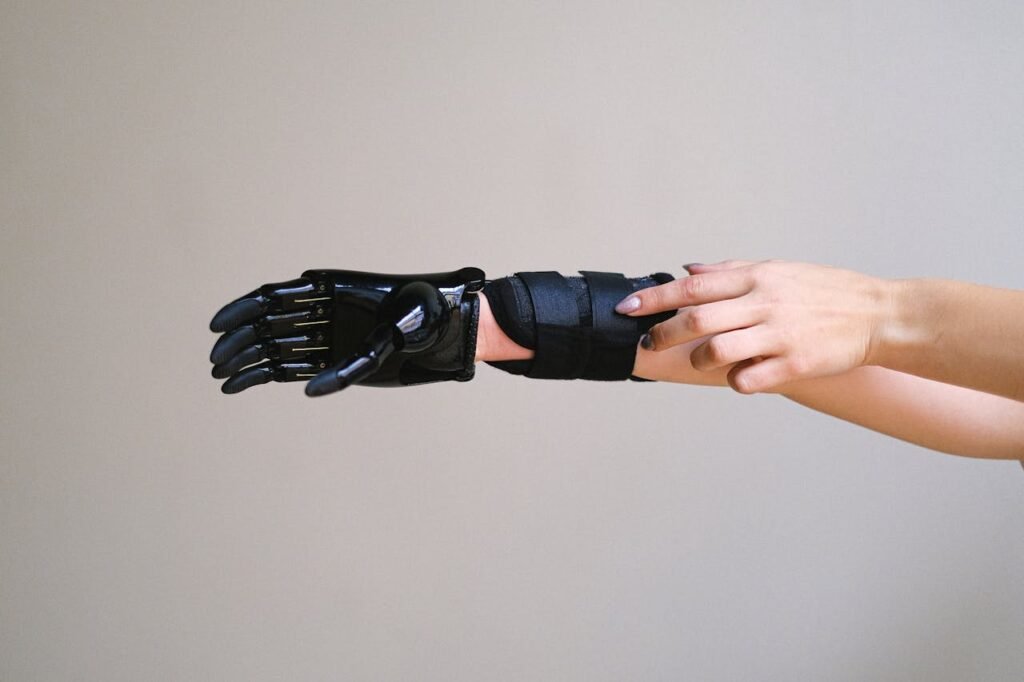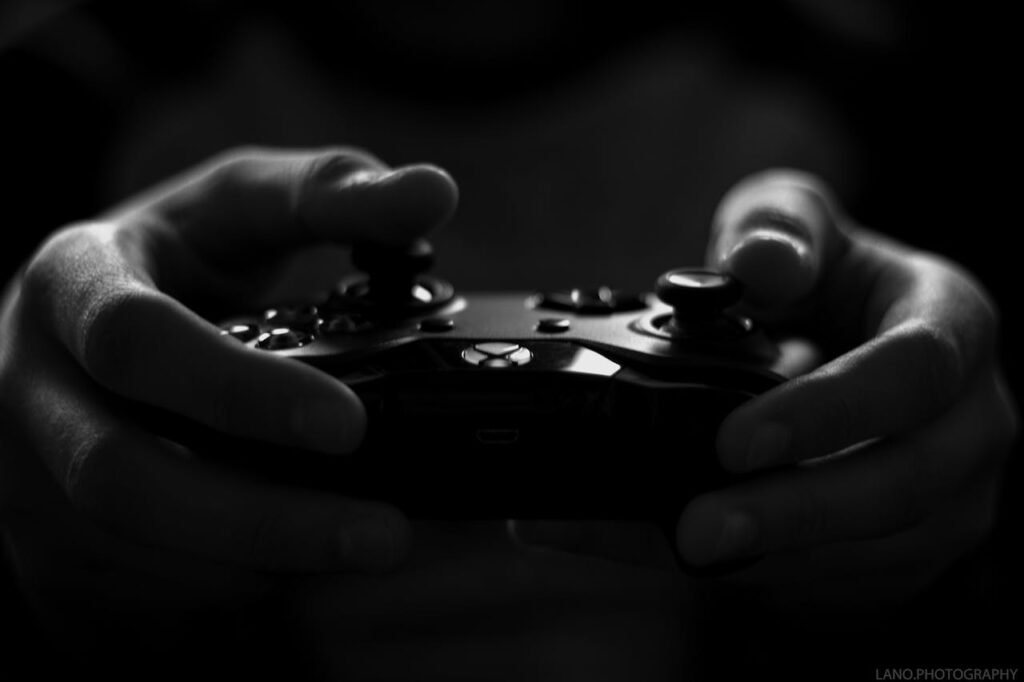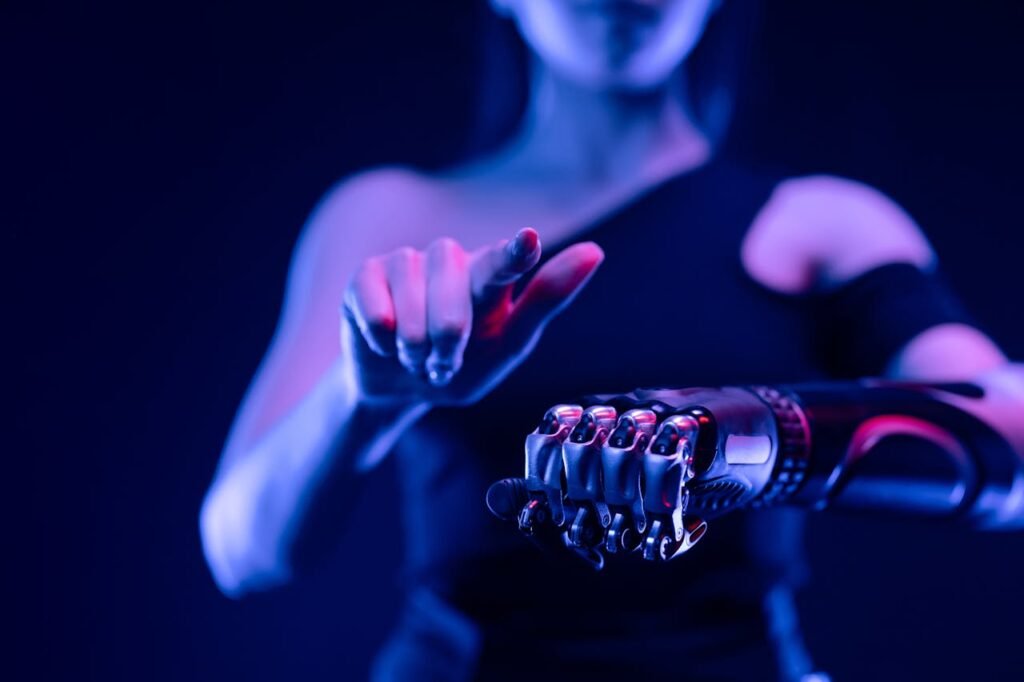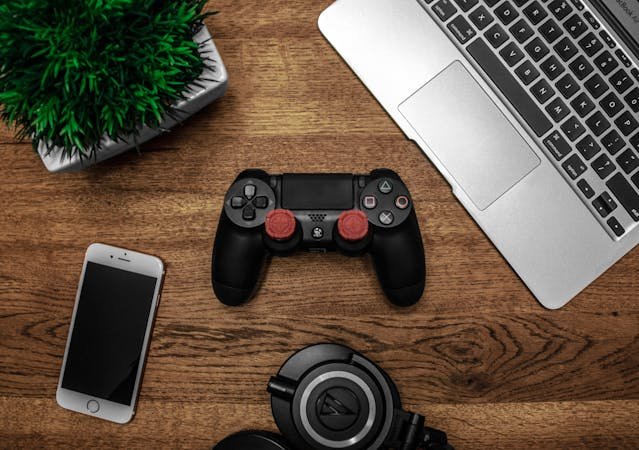Recovering after a finger amputation is about more than just healing the wound.
It’s about learning to move again, regaining strength, and rebuilding confidence in everyday life.
For many people, traditional rehabilitation can feel repetitive and slow.
It works — but it can also be tiring and emotionally draining.
Gamified recovery changes that.
By turning exercises into interactive, goal-based activities, it keeps the mind engaged and the body motivated.
Every movement becomes part of a challenge, a score to beat, or a goal to unlock.
The result?
Better consistency, faster progress, and a more positive experience throughout recovery.
In this guide, we will explore exactly how gamified recovery helps finger amputees achieve real results.
We’ll cover the science behind it, practical ways to get started, and how tools like RoboBionics’ gamified rehab app are transforming lives across India.
Why Gamification Works in Rehabilitation
The Science of Motivation

Rehabilitation exercises work best when done regularly, but it’s hard to stay motivated with the same routine every day.
Gamification uses rewards, challenges, and feedback to make the process more engaging.
When a task feels like a game, the brain releases dopamine — the “feel-good” chemical that keeps us coming back for more.
Turning Repetition Into Achievement
Traditional rehab often requires repeating the same motion many times.
Gamified recovery turns those repetitions into levels, scores, or progress bars.
Instead of counting exercises, patients focus on achieving goals and improving their “performance.”
Keeping the Mind Engaged
Recovery is not just physical — the brain plays a big role in regaining movement and control.
Gamified activities challenge both mind and body by requiring focus, timing, and coordination.
This mental engagement leads to faster skill improvement.
Benefits of Gamified Recovery for Finger Amputees
Encourages Consistency
Finger rehabilitation often involves small, precise movements that need daily practice.
Gamified recovery makes these exercises more fun, so patients are more likely to do them regularly.
Tracks Progress Clearly
Seeing a visual record of improvement is powerful.
Scores, badges, and progress charts show patients exactly how far they’ve come, giving them a sense of achievement.
Reduces Mental Fatigue
Boredom can make people skip sessions, slowing progress.
By adding variety and challenges, gamified rehab keeps the brain alert and reduces the feeling of “just exercising.”
How Gamification Fits Finger Amputation Recovery
Focus on Fine Motor Skills
After finger loss, patients must retrain the muscles and nerves to perform fine movements.
Gamified tools allow them to practice gripping, tapping, and pinching in a structured, playful way.
Adapts to Different Abilities
Not all patients start at the same level.
Gamified systems can adjust difficulty automatically, so everyone works at a pace that feels challenging but not overwhelming.
Builds Confidence Early
Winning small challenges early in the process can boost morale.
This confidence carries over into daily life, encouraging patients to try new tasks with their recovering hand.
RoboBionics’ Gamified Rehab App for Finger Amputee Recovery
Designed for Real Rehabilitation Needs
The RoboBionics rehab app was built with direct input from therapists and patients.
It is not just a game — it is a structured training program disguised as a fun activity.
Every challenge is based on clinically approved exercises that target specific recovery goals.
How It Works
The app connects to sensors that track hand and finger movements.
When the patient performs an exercise, the app translates that movement into an action within a game.
For example, squeezing a virtual object or catching items on the screen may actually be strengthening grip muscles in real life.
Levels and Difficulty Adjustment
The app automatically adjusts difficulty based on progress.
If a patient’s control improves, the game becomes slightly harder to maintain challenge.
This keeps recovery in the “sweet spot” — never too easy to be boring and never too hard to be discouraging.
Exercises Made Fun
Grip and Release Challenges

One of the most important skills for finger amputees is regaining grip control.
In the app, this might appear as picking up and placing virtual objects in a game world.
The patient practices precise grip without even realizing they are doing repetitions.
Speed and Reaction Games
Reaction time is crucial for functional use of the hand.
Some mini-games test how quickly the patient can respond to visual cues, which also improves coordination and muscle responsiveness.
Endurance-Based Activities
Holding a grip for extended periods builds stamina.
The app turns this into timed challenges where patients maintain a hold to keep a virtual action going, such as keeping a balloon in the air.
Benefits Beyond Physical Training
Emotional Engagement
Rehab can be emotionally draining when progress feels slow.
The app provides constant feedback, small victories, and even celebratory animations to lift the patient’s mood.
Social Interaction
Some features allow friendly competition with other patients or sharing progress with family.
This adds an extra layer of motivation through community support.
Self-Monitoring
Patients can view their performance data at any time.
This makes it easier to understand which skills are improving and which need more focus.
Step-by-Step Gamified Recovery Plan for Finger Amputees
Setting the Foundation in the First Week

Recovery starts with understanding what your hand can do right now.
The first week is about assessment, gentle activation, and getting comfortable with the gamified system.
A therapist will often help you test your current grip strength, range of motion, and reaction speed before beginning.
During this stage, the app will set very simple goals — things like holding a light grip for a few seconds or tapping a target slowly.
You are not aiming for speed yet. The goal is smooth, controlled movements without strain.
It’s important to spend no more than 10–15 minutes per session in this early phase.
Two or three short sessions each day are more effective than one long one because the muscles and nerves adapt better to frequent, low-intensity work.
Introducing Early Game Elements
By the second or third session, you’ll start seeing game-like features appear.
You might earn points for each successful repetition or watch your on-screen character complete a small task when you perform the correct movement.
These features are not just for fun — they provide instant feedback, showing you that every correct motion is progress.
Many patients find that seeing the results of their movements in real time makes them more engaged and willing to keep going, even when the exercises are repetitive.
Moving Into Skill-Specific Training
After the first week, the app begins focusing on different skill areas in separate sessions.
One day might be dedicated to grip strength, another to finger coordination, and another to reaction time.
This variation keeps training fresh and ensures that all aspects of hand function improve together.
For example, a grip session could involve picking up virtual blocks of different sizes and placing them on a shelf.
A coordination session might require tapping specific areas of the screen in a certain order, improving finger independence.
Reaction sessions could involve catching falling objects before they hit the ground, sharpening your response speed.
Tracking Progress and Adjusting Goals
One of the strengths of gamified rehab is its built-in tracking.
At the end of each week, you can see how your scores and completion rates have changed.
If your grip strength score is improving faster than your reaction speed, the app might add extra reaction-based challenges to balance your progress.
The therapist can also review this data remotely or during your in-person visits to make sure your plan is on track.
This means you’re always working on the skills that need the most attention.
Building Endurance in the Second Month
By the time you’ve been using the system for four to six weeks, you’ll likely be ready for longer sessions.
The focus here shifts slightly — from simply performing a movement correctly to being able to repeat it many times without fatigue.
Endurance games might involve keeping a grip or hold for longer periods while still maintaining control.
For example, you might be holding a virtual lever down to keep a machine running in the game world.
If your muscles start to shake or lose strength, the app will detect it and adjust accordingly.
This type of endurance work is crucial for real-life activities like carrying objects, holding tools, or gripping handlebars.
Introducing Real-World Tasks Into Gameplay
Around the same time, you’ll start to see exercises that mimic daily activities more closely.
Instead of generic shapes or targets, you might be asked to “pick up” a virtual mug or “button” a shirt within the game.
These are carefully designed to match the muscle patterns needed for real-life versions of these tasks.
Patients often find this stage exciting because the link between the game and actual life becomes very clear.
Every success in the app feels like a step toward independence outside the clinic.
Handling Plateaus and Motivation Dips
It’s natural to hit a point where progress feels slower.
Gamified rehab helps with this by introducing new environments, challenges, and rewards at just the right time.
Even if your scores aren’t rising quickly, the sense of novelty keeps you coming back.
Your therapist might also suggest changing your daily routine — for example, doing one longer session in the morning instead of two shorter ones — to break the monotony and give your muscles a fresh challenge.
Transitioning to Higher Precision Work
Once you have good baseline strength, coordination, and endurance, it’s time to refine your precision.
In this stage, games might require you to control the pressure of your grip very carefully, not just grip as hard as possible.
You might be “watering plants” in the game, where squeezing too hard spills water and squeezing too softly doesn’t water enough.
This fine-tuning stage is critical for using delicate objects in real life, such as holding a pen, peeling fruit, or handling fragile tools.
Incorporating the Non-Affected Hand for Balance
Finger amputees sometimes over-rely on the non-affected hand, which can lead to uneven strength and coordination.
The app can be programmed to include bilateral activities where both hands perform tasks together.
This keeps your overall movement balanced and prevents long-term strain on one side.
For example, you might play a game where you control two characters at once — one with each hand — requiring you to keep both active throughout the session.
Preparing for Advanced Functional Use
In the final stage of the plan, the focus is on integrating all the skills you’ve developed.
Strength, speed, precision, and endurance come together in complex game challenges that require multiple skills at once.
These could be timed obstacle courses in the game that require quick reactions, accurate grip control, and the ability to switch between movements rapidly.
This stage mirrors the unpredictability of real life, where you might need to open a door, grab a bag, and turn on a light in quick succession.
Maintaining Gains Over the Long Term
Once you’ve reached your functional goals, it’s important not to stop completely.
Using the app two or three times a week as maintenance keeps your skills sharp and prevents regression.
Because the activities are engaging, most patients find it easy to keep going even after formal rehab ends.
This ongoing gamified training can also be a valuable warm-up before using specialized tools, sports equipment, or musical instruments, helping you prevent injury and keep performance high.
Combining Gamified Recovery with Other Rehabilitation Methods for Maximum Results

Why Integration Matters
Gamified recovery is powerful on its own, but it becomes even more effective when used alongside other proven rehabilitation techniques.
Each method targets recovery from a different angle — some focus on muscle strength, others on joint flexibility, others on nerve re-education.
When these approaches are combined, progress is faster and more complete.
Working with Physiotherapy Sessions
Physiotherapy remains a cornerstone of recovery for finger amputees.
While gamified rehab keeps you engaged at home, physiotherapy ensures you are doing movements correctly and efficiently.
A therapist can observe how you use your hand in the game and then give targeted stretches or strengthening drills to improve weak areas.
For example, if the therapist notices you struggle with finger extension in the game, they might add resistance band exercises to build that specific movement.
The next time you play, you’ll find the task easier because the physical therapy directly supported your game-based training.
Using Occupational Therapy for Real-Life Skills
Occupational therapy focuses on adapting daily activities after an amputation.
Gamified rehab can act as a safe, controlled practice environment for these tasks before you attempt them in the real world.
If your occupational therapist is helping you relearn how to cook, the game can include virtual tasks like stirring, chopping, or lifting objects with varied grip strength.
Once you master the movement in the app, you’ll have the muscle memory to attempt it with real utensils safely.
Mirror Therapy to Support Brain Rewiring
Mirror therapy uses visual feedback to trick the brain into thinking the amputated limb is moving normally.
This method is especially effective in reducing phantom limb sensations and improving movement control.
By combining mirror therapy with gamified exercises, you give your brain both visual and interactive input.
You might perform a game movement while watching your reflection, helping the brain link intention, muscle activation, and visual confirmation all at once.
Strengthening with Resistance Tools
Small resistance bands, putty, or spring-loaded grips can be used before or after your gamified session.
These tools build raw muscle power, which then translates into better performance in game challenges that require strength.
For example, a balloon-holding game in the app becomes easier if you’ve been doing daily resistance grip squeezes.
The stronger your muscles are, the more precise and sustained your game movements will be.
Sensory Re-education Exercises
After amputation, the sensory feedback from your hand changes dramatically.
Some patients experience hypersensitivity, while others have reduced sensation.
Sensory re-education activities — such as touching different textured objects, placing the hand in warm and cool water, or feeling vibrations — can be paired with gamified rehab.
As your sensory feedback improves, you’ll be able to adjust your grip more precisely in the game, which directly improves your fine motor skills in real life.
Neuromuscular Electrical Stimulation (NMES)
Devices like the BrawnBand, which we at RoboBionics manufacture, can stimulate muscles to contract using mild electrical pulses.
When used alongside gamified training, NMES can “wake up” dormant muscles before you begin your session, making them more responsive.
For example, a 10-minute NMES warm-up can help you perform better in a game that requires repeated finger tapping.
Your muscles will already be primed, reducing fatigue and improving accuracy.
Combining with Relaxation and Breathing Techniques
Hand movements are often affected by overall body tension.
When you are stressed, your shoulders rise, your arm muscles tighten, and your grip control suffers.
Breathing exercises before and during gamified sessions can calm the body and help you move more fluidly.
For instance, inhaling deeply before starting a level and exhaling slowly as you grip or release in the game can make movements smoother and more consistent.
Cross-Training with the Non-Affected Hand
While your main focus is on the recovering hand, training the non-affected hand can indirectly improve recovery too.
This is because some motor learning transfers from one side of the body to the other — a phenomenon known as “cross-education.”
By playing bilateral games that use both hands, you ensure balanced movement patterns and prevent the non-affected hand from becoming too dominant.
Creating a Weekly Integration Schedule
To get the most from combined methods, structure your week so that different techniques complement each other.
A sample plan might look like this:
- Monday, Wednesday, Friday: Gamified rehab (30 minutes) + physiotherapy stretches (15 minutes)
- Tuesday, Thursday: Gamified rehab (20 minutes) + NMES warm-up (10 minutes) + resistance training (15 minutes)
- Saturday: Gamified rehab (20 minutes) + sensory re-education exercises (15 minutes) + occupational therapy practice tasks (15 minutes)
- Sunday: Light mirror therapy (10 minutes) + breathing and relaxation session (15 minutes)
By rotating techniques, you prevent overuse fatigue, target all recovery areas, and keep training varied and enjoyable.
Combining Gamified Recovery with Other Rehabilitation Methods for Maximum Results
Why Integration Matters

Gamified recovery is powerful on its own, but it becomes even more effective when used alongside other proven rehabilitation techniques.
Each method targets recovery from a different angle — some focus on muscle strength, others on joint flexibility, others on nerve re-education.
When these approaches are combined, progress is faster and more complete.
Working with Physiotherapy Sessions
Physiotherapy remains a cornerstone of recovery for finger amputees.
While gamified rehab keeps you engaged at home, physiotherapy ensures you are doing movements correctly and efficiently.
A therapist can observe how you use your hand in the game and then give targeted stretches or strengthening drills to improve weak areas.
For example, if the therapist notices you struggle with finger extension in the game, they might add resistance band exercises to build that specific movement.
The next time you play, you’ll find the task easier because the physical therapy directly supported your game-based training.
Using Occupational Therapy for Real-Life Skills
Occupational therapy focuses on adapting daily activities after an amputation.
Gamified rehab can act as a safe, controlled practice environment for these tasks before you attempt them in the real world.
If your occupational therapist is helping you relearn how to cook, the game can include virtual tasks like stirring, chopping, or lifting objects with varied grip strength.
Once you master the movement in the app, you’ll have the muscle memory to attempt it with real utensils safely.
Mirror Therapy to Support Brain Rewiring
Mirror therapy uses visual feedback to trick the brain into thinking the amputated limb is moving normally.
This method is especially effective in reducing phantom limb sensations and improving movement control.
By combining mirror therapy with gamified exercises, you give your brain both visual and interactive input.
You might perform a game movement while watching your reflection, helping the brain link intention, muscle activation, and visual confirmation all at once.
Strengthening with Resistance Tools
Small resistance bands, putty, or spring-loaded grips can be used before or after your gamified session.
These tools build raw muscle power, which then translates into better performance in game challenges that require strength.
For example, a balloon-holding game in the app becomes easier if you’ve been doing daily resistance grip squeezes.
The stronger your muscles are, the more precise and sustained your game movements will be.
Sensory Re-education Exercises
After amputation, the sensory feedback from your hand changes dramatically.
Some patients experience hypersensitivity, while others have reduced sensation.
Sensory re-education activities — such as touching different textured objects, placing the hand in warm and cool water, or feeling vibrations — can be paired with gamified rehab.
As your sensory feedback improves, you’ll be able to adjust your grip more precisely in the game, which directly improves your fine motor skills in real life.
Neuromuscular Electrical Stimulation (NMES)
Devices like the BrawnBand, which we at RoboBionics manufacture, can stimulate muscles to contract using mild electrical pulses.
When used alongside gamified training, NMES can “wake up” dormant muscles before you begin your session, making them more responsive.
For example, a 10-minute NMES warm-up can help you perform better in a game that requires repeated finger tapping.
Your muscles will already be primed, reducing fatigue and improving accuracy.
Combining with Relaxation and Breathing Techniques
Hand movements are often affected by overall body tension.
When you are stressed, your shoulders rise, your arm muscles tighten, and your grip control suffers.
Breathing exercises before and during gamified sessions can calm the body and help you move more fluidly.
For instance, inhaling deeply before starting a level and exhaling slowly as you grip or release in the game can make movements smoother and more consistent.
Cross-Training with the Non-Affected Hand
While your main focus is on the recovering hand, training the non-affected hand can indirectly improve recovery too.
This is because some motor learning transfers from one side of the body to the other — a phenomenon known as “cross-education.”
By playing bilateral games that use both hands, you ensure balanced movement patterns and prevent the non-affected hand from becoming too dominant.
Creating a Weekly Integration Schedule
To get the most from combined methods, structure your week so that different techniques complement each other.
A sample plan might look like this:
- Monday, Wednesday, Friday: Gamified rehab (30 minutes) + physiotherapy stretches (15 minutes)
- Tuesday, Thursday: Gamified rehab (20 minutes) + NMES warm-up (10 minutes) + resistance training (15 minutes)
- Saturday: Gamified rehab (20 minutes) + sensory re-education exercises (15 minutes) + occupational therapy practice tasks (15 minutes)
- Sunday: Light mirror therapy (10 minutes) + breathing and relaxation session (15 minutes)
By rotating techniques, you prevent overuse fatigue, target all recovery areas, and keep training varied and enjoyable.
Conclusion
Recovering from a finger amputation is a journey that demands patience, effort, and the right tools.
Gamified recovery transforms this journey from a routine chore into an engaging, rewarding experience.
It makes patients look forward to therapy instead of dreading it.
With systems like RoboBionics’ gamified rehab app, every movement becomes part of a meaningful challenge.
You’re not just exercising — you’re playing, improving, and building a better future for your hand’s abilities.
The results speak for themselves: stronger muscles, faster reactions, better precision, and — most importantly — restored confidence.
Over time, this approach doesn’t just heal the hand. It changes how patients see themselves and what they believe they can do.
At RoboBionics, our mission is simple: to make advanced, accessible rehabilitation tools that empower people across India.
We believe recovery should be driven by both science and joy — and gamification brings these two together perfectly.
If you or someone you know is ready to experience this transformation, reach out to us and explore how our gamified recovery system can help.
The journey to real results starts with a single, simple step — and it can be a game you’ll want to keep playing.



